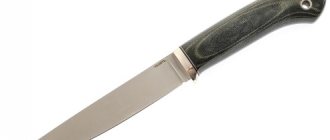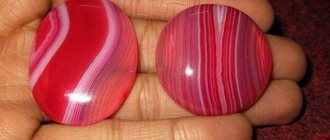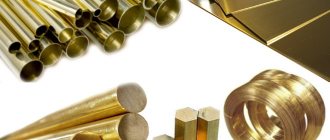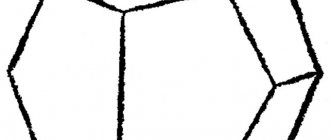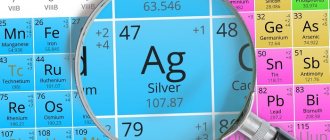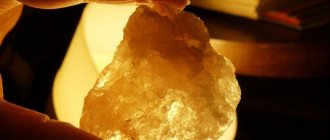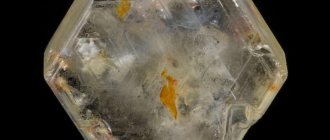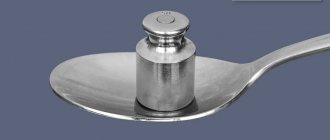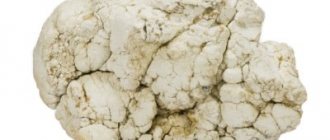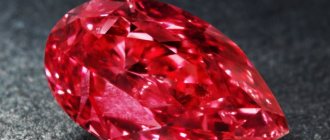Minerals are natural bodies that occur naturally. They are formed as a result of various physical and chemical processes on the surface or in the interior of the Earth. All minerals are currently or were once in a crystalline state. They can exist in either a solid, liquid (water, mercury) or gaseous (methane, carbon dioxide) state.
The word “mineral” is of Latin origin and is derived from “minerale”, which means “ore”. Minerals are homogeneous in physical and chemical composition and are components of rocks, meteorites, and ores.
The term “mineral” is sometimes used instead of the scientific term “mineral species” or “mineral variety.” A mineral species is the commonality of all mineral samples, having a common chemical composition and crystalline structure, i.e. commonality of specific samples. A variety is samples that are united in chemical composition and crystal structure, but have large differences in morphological features (color, grain, etc.). So, chalcedony, amethyst, crystal, citrine are varieties of the quartz mineral.
Formation of minerals
Minerals are formed either in the earth's crust or on the surface. Formation processes are of one of three types:
- Endogenous (deep). In this case, the formation of minerals occurs deep underground. Molten silicate rocks (magma), flowing into the thickness of the earth's crust from the underlying layers, solidify. The gases and aqueous solutions released during this process collect in voids and cracks. This is how new minerals appear.
- Exogenous (superficial). This type of process is characterized by the fact that the formation of new minerals occurs on the earth's surface: in places of contact of the lithosphere with the hydrosphere, biosphere and atmosphere. Processes such as weathering and the formation of rocks due to the vital activity of organisms take place here (for example, the formation of shell rock from the mineralized remains of marine animals).
- Metamorphic. Geological processes constantly occur in the earth's crust, which cause the formation of new minerals. For example, sedimentary rocks of biogenic origin may end up in the lithosphere. There they are exposed to high temperature and pressure. This is how marble is made from limestone. Or vice versa, during a volcanic eruption, magma reaches the surface, flows out, solidifies and undergoes weathering and other exogenous changes.
Shine
The formation of shine in minerals occurs due to the reflection of light rays from their surface. In any manual about minerals, the classification is divided into two large groups:
- with a metallic sheen;
- with a non-metallic luster.
The first include those rocks that give a black line and are opaque even in fairly thin fragments. This includes magnetite, graphite and coal. As an exception, minerals with a non-metallic luster and a colored streak are also considered here. This applies to gold with a greenish streak, copper with a peculiar red streak, silver with a silver-white streak, as well as a number of others.
Metallic in nature is similar to the luster of fresh fracture of various metals, and can be seen quite clearly on the fresh surface of the sample, even when rock-forming minerals are considered. The classification of products with such luster also includes opaque samples, which are heavier compared to the first category.
Metallic luster is characteristic of minerals, which are ores of various metals.
Mineral classes
The world generally accepted classification of minerals was developed by the IMA (International Mineralogical Society). The basic unit of classification is the class. Classes include families, subclasses, groups and supergroups. Basically, the classification is based on chemical properties and includes the following classes:
- Sulfides (arsenides, antimonides, selenides, bismuthides, telrides, as well as the pyrite-marcasite family). This is a group of sulfur compounds of 250 minerals. Examples: cinnabar, copper and iron pyrites.
- Sulfates, derivatives of sulfuric acid with low hardness and non-metallic luster: Glauber's salt, gypsum, anhydrite.
- Sulfosalts,
- Halides. More than 100 minerals, fluoride, chloride and other halogen compounds: fluorite, sodium chloride, sylvite.
- Oxides (includes spinel and hegmobite supergroups) and hydroxides. These two classes make up up to 17% of the entire earth's crust. Of this, 12% is quartz. In addition to it, oxides and hydroxides of silicon and metals combine many minerals of low and high density: bauxite, corundum, magnetite, hematite, etc.
- Carbonates. Carbonic acid salts in the lithosphere are represented by more than 80 minerals. These are magnesite, siderite, dolomite, calcite, etc.
- Arsenites (antimonites, selenites, bismuthites, telrites and arsenites themselves),
- Nitrates,
- Borats,
- Chromates,
- Molybdates,
- Phosphates, i.e. salts of phosphoric acid. There are about 200 minerals of low hardness and density in the class: calcium phosphate, apatite.
- Tungstates,
- Silicates, aluminosilicates. These are more than 800 minerals with great rock-forming potential: 80% of the entire earth's crust. If we classify quartz as silicates, then their share will be more than 90%. Silicates are characterized by a crystal lattice based on a silicon-oxygen tetrahedron: augite, olivine, mica, beryl, etc.
- Arsenates,
- Vanadates.
The classification also includes several special supergroups (apatites, laueites, alunites, garnets, mayenites).
According to the international classification, native elements are classified into a separate class. It includes nuggets of gold, platinum, arsenic, mercury, iron, nickel, sulfur and carbon (such as graphite or diamond).
The class of organic minerals also exists and includes some minerals of natural origin (acetates, mellitates, oxalates, etc.). It is necessary to distinguish between biogenic mineral formations and organic minerals. The first include natural bitumen, resins (amber), pearls, copal, ozokerite, and shungite. All these substances do not belong to minerals, since they do not and never have had a crystalline structure. Despite this, they are often mistakenly called organic minerals.
Basic properties of minerals determinant (Table)
Page 1 of 3
Minerals are relatively specific and fairly stable chemical compounds and native elements, characterized by a strictly constant internal structure. Typically, minerals include natural formations that arise as a result of physical and chemical processes in the depths and on the surface of the earth’s crust.
Currently, up to 4000 minerals are known.
Basic properties of minerals
This table takes into account the physical and chemical aspects, both basic (chemistry, structure, mineral aggregates, hardness, density, cleavage, fracture, color, feature, shine, genesis) and additional (magnetic and electrical properties, hygroscopicity, smell, taste, flammability , elasticity, malleability, radioactivity) properties and provides information regarding the practical use of minerals.
Syngony is a classification of crystallographic symmetry groups, crystals and crystal lattices depending on the coordinate system (coordinate reference); symmetry groups with a single coordinate system are combined into one system. Crystals belonging to the same system have similar angles and edges of unit cells.
Cleavage is the ability of minerals to cleave (split) along parallel, smooth, shiny surfaces called cleavage planes. Cleavage is a property exclusively of crystalline minerals.
A fracture is a split surface oriented contrary to cleavage. There are conchoidal (chalcedony, flint, quartz), splinter (selenite, asbestos), granular (rocks), earthy (bauxite, limonite, stepped (orthoclase, galena) and other fracture surfaces.
A line (the color of a line) is a mark that remains on an unglazed porcelain plate (biscuit) if you draw a mineral on it.
Table identifying minerals, their properties, formula, genesis
| Mineral, formula Varieties (R.) | Syngony (S.) Forms of being in nature (F.) | Hardness, point density, g/cm3 | Cleavage (Sp.) Kink (Izl.) | Color (C.) Trait (Ch.) Shine (B.) | Additional properties | Genesis (G.) Satellites (Satellite) Application (Ex.) Other information |
| 1 | 2 | 3 | 4 | 5 | 6 | 7 |
I. NATURAL ELEMENTS | ||||||
| 1. Diamond- WITH R.: - diamond - transparent, carbonado - black, bead - opaque, low quality; ballas - spherical side | S. - cubic F. - well-bounded crystals (octahedrons and rhombic dodecahedrons). The largest diamond, the Cullenan, weighed 3,025 carats. | 10 3,52 | Sp. - No Izl. - uneven | C. - colorless, yellowish, bluish, less often - green, red, black Ch. - no B. - diamond, strong | Dielectric, transmits ultraviolet (UV) and infrared (IR) rays, glows blue and yellow in UV and cathode rays. Jumps out of the water | G. - magmatic in explosion tubes. Metamorphic (cosmic) in astroblemes Concentrated in placers Etc. — 1st class jewelry, abrasive material |
| 2. Graphite - C | S. - hexagonal F. - tablets, dense earthy and scaly masses | 1,0 2,2 | Sp. -very perfect Izl. - uneven | C. - iron black to steel gray Ch. - black B. - metallic to bold | Writes on paper, gets your hands dirty, conductor of electricity | G. - igneous and metamorphic Etc. - in metallurgy, for the manufacture of electrodes, dry elements, paints, pencils, lubricants |
| 3. Sulfur - S | S. - rhombic, can be hexagonal and amorphous F. - powdery and earthy masses, deposits, crusts | 1-5 — 2,5 2,1 | Sp. - various Izl. - uneven | C. - yellow, brown, green, gray Ch. - white B. - fat | Fragile. Lights from a match, the flame is blue, the suffocating smell of sulfur dioxide. Poor conductor of electricity. Electrified by friction. Dissolves in carbon disulfide | G. - formed during the decomposition of gypsum, released from volcanoes and hot springs Satellite - gypsum, celestine, aragonite, calcite, bitumen, ammonia and others Etc. — electrochemistry, medicine, electrical engineering, military science, agriculture, rubber industry, match production, etc. |
| 4. Gold —Au R.: electrum - up to 30% or more silver; cuprous gold - up to 20% copper; bismuth gold - up to 3% bismuth; maldonite - up to 35% bismuth | S. - cubic F. - crystals are rare, more often - leaves, scales, tree-like forms. Large nuggets are found (up to 70, 100, 250 kg) | 2,5 — 3 15 — 19 | Sp. - perfect Izl. - uneven, stepped | Color - golden, lighter in the presence of silver Ch. - greenish-brown B. - metal | Malleable. Insoluble in HC1 and HNO3. Dissolves in heated aqua regia | G. - igneous (in acidic vein rocks) and exogenous (in placers), diagenetic and as a result of destruction Satellite - pyrite, arsenopyrite, cinnabar, barite, magnetite, platinum, diamond, etc. Etc. - 1st class jewelry, currency, medicine, architecture, instrument making, electron microscopy, etc. |
| 5. Platinum -Pt R.: ferroplatinum; iridescent, palladium, rhodonic, cuprous platinum | S. - cubic F. - crystals are rare. Most often amorphous. Nuggets up to 8 kg | 4 — 4,5 14 — 19 | Sp. - absent Izl. - uneven | C. - steel-white Ch. - gray B. - metal | Forgeable. Dissolves only in heated aqua regia | G. is igneous, in basic and ultrabasic rocks. Placer Satellite - serpentine, olivine, chromite, magnetite, chalcopyrite, etc. Etc. - in jewelry, medicine, electrical engineering, electroplating, electron microscopy, for the manufacture of acid- and fire-resistant laboratory glassware. |
II. SULFIDE MINERALS | ||||||
| 6. Pyrite -FeS2 (sulfur pyrite) | S. - cubic F. - granular masses, cube-shaped crystals | 6 — 6,5 4,9 — 5,2 | Sp. - absent Izl. - uneven, less often stepped | C. - straw yellow Ch. - black B. - metallic, bright | Hatching on the faces of the cube. Conducts electricity poorly | G. - hydrothermal (vein, contact); hypergene; often found in clays and coal seams Satellite — sulfur compounds Cu, Pb, Zn, gold, marcasite, siderite, limonite, goethite, etc. Etc. — raw materials for the production of sulfuric acid |
| 7. Marcasite - FeS2 (radiant pyrite) | S. - rhombic F. - nodules, crusts, lance-shaped intergrowths, radiate-columbus aggregates, dense masses | 6 4,9 | Sp. - absent Izl. - uneven | C. - bronze-yellow Ch. - grayish-yellow B. - metallic silver-gold | Weak electrical conductivity | G. - hydrothermal and hypergene Satellite - pyrite, quartz; less often - galena, sphalerite, copper ores, etc. Etc. — raw materials for the production of sulfuric acid |
| 8. Chalcopyrite CuFeS2 (copper pyrite) | S. - tetragonal F. - Tetrahedral crystals, twins, solid masses and phenocrysts | 3,5 — 4 4,2 | Sp. absent Izl. - uneven | C. - bright yellow, golden Ch. - greenish-black B. - strong, metallic | Variegated tarnish like a peacock's tail (feather). Poor conductor of electricity | G. - predominantly hydrothermal, vein and contact Satellite - pyrite, cassiterite, quartz, barite, calcite, sulfur compounds Cu, Zn, Pb, Ag, Ni, Co and others Etc. - the most important copper ore |
| 9. Galena - PbS (lead luster) | S. - cubic F. - crystals, crystalline masses | 2 — 3 7,4 — 7,6 | Sp. -very perfect Izl. - uneven | C. - lead gray Ch. -bluish-gray B. - metal | Conducts electricity poorly. Often contains an admixture of silver | G. - igneous and metamorphic Satellite - sphalerite, chalcopyrite, quartz, calcite, barite, fluorite, etc. Etc. - main lead ore |
| 10. Sphalerite -ZnS (zinc blende) R.: cleiophane - light; marmatite - dark (> 10% Fe); umuchionite - colored with realgar in crimson or pink-red color, kidney-shaped, etc. | S. - cubic F. - crystals, solid large- and fine-grained masses | 3,5 — 4 3,9 — 4,2 | Sp. -very perfect Izl. -different | Color - from colorless to dark brown and almost black Ch. - white, light yellow to dark brown B. - diamond to semi-metallic | Some varieties have tri-boluminescence. Dielectric. Decomposes in HC1 to form H2S | G. - hydrothermal, less often pneumatolytic. May be typogenic (in cementation zones) Satellite — galena and other sulfide minerals, quartz, barite, fluorite; less often - carbonates, etc. Etc. - main zinc ore |
| 11. Molybdenite - MoS2 (molybdenum luster) | S. - hexagonal F. - leafy crystals. Often radial aggregates and rims of quartz veins | 1 4,7 | Sp. -very perfect Izl. - uneven | C. - steel gray Ch. - bluish, writes on paper B. - strong metallic | It differs from graphite in color, features, shine, and elasticity. leaves | G. - pneumatolytic and hydrothermal May be magmatic Satellite - cassiterite, pyrite, gold, etc. Etc. - the most important molybdenum ore |
| 12. Cinnabar — HgS R.: liver ore - a dark mixture of cinnabar clay and bitumen | S. - trigonal F. - rhombohedra, twins, germination. Usually solid granular masses | 2 — 2,5 8 — 8,2 | Sp. - perfect Izl. - uneven | C. - red (co-chenille), less often lead-gray, to black Ch. - red B. - diamond | The plane of polarization rotates 15 times faster than quartz. Dielectric. When heated in a closed blowpipe with iron filings, it produces droplet-liquid mercury | G. - hydrothermal (epi-hydrothermal - deposited during the neutralization of alkaline mercury solutions near the surface). Maybe in placers Satellite — native mercury, pyrite, marcasite, realgar, stibnite, quartz, fluorite, barite, chalcedony, opal, Etc. - the most important mercury ore and natural dye |
III. SULPHATES MINERALS | ||||||
| 13. Plaster – CaSO4 – H2O (light spar) R.: - alabaster - fine-grained white gypsum; selenite - fibrous pink gypsum | S. - monoclinic, rhombic F. - single crystals, Gali and Paris twins) of the swallowtail type, granular masses | 2 2,3 | Sp. - completely decided Izl. - uneven, splintered | C. - white, pink, gray, colorless Ch. - white B. - glass | Dissolves in water in a ratio of 1:400. When heated to 63°C, it loses water and turns into anhydrite. | G. is a marine chemical sediment that precipitates from solutions at 63 °C, a product of the hydration of anhydrite and the oxidation of sulfur and sulfur minerals Satellite - anhydrite, halite, kieserite Etc. - in architecture, as an ornamental stone, fertilizer, for falsification of products |
| 14. Anhydrite - CaSO4 | C- rhombic F. - tabular and prismatic crystals with rough shading on the edges. Solid marble-like masses | 3 — 3,5 2,9 — 2,98 | Sp. - perfect Izl. - uneven | C. - gray, blue, bluish-gray, violet C. - white B. - matte, sugar-like, pearlescent on the cleavage planes | Absorbing water, it slowly turns into gypsum. In a reducing flame on coal produces CaS, which in a drop of water on a silver coin causes a dark spot to appear | G. - chemical, marine sediment; precipitates from solutions at temperatures above 63 °C. May occur in areas of volcanism as a result of precipitation from hot solutions Satellite - gypsum, halite, kieserite, boracite Etc. - ornamental stone; for the production of sulfuric acid |
| 15. Mirabilite - Na2SO4 - 10H2O (Glauber's salt) | S. - monoclinic F. - efflorescences, crusts, solid masses | 1,5 — 2 1,48 | Sp. - perfect Izl. - uneven | C. - white, colorless Ch. - white B. - glass, frosted | Bitter salty taste. In the air it loses water and crumbles. Easily soluble in acids | G. - chemical, lake and soil sediment Satellite - halite, thenardite Etc. - for the production of soda and in glass production |
| 16. Barite - BaSO4 (heavy spar) | S. - rhombic F. - tabular and prismatic crystals, solid granular and leafy masses | 2,5 — 3 4,3 — 4,6 | Sp. - perfect in two directions Izl. - uneven | C. - white, pink, brown, red, less often - colorless Ch. - white B. - matte | It does not dissolve in HCl. In the flame of the blowpipe it cracks and the edges become rounded. | G. - hydrothermal, ore and pure barite veins. Hypergene, iron hat zones Satellite - fluorite, copper, lead, zinc, silver minerals, gypsum, calcite, chalcedony, quartz, zeolites, etc. Etc. - in paint and varnish, rubber, paper, pharmaceutical industries |
| 1 | 2 | 3 | 4 | 5 | 6 | 7 |
____________
A source of information:
1. DICTIONARY OF GEOLOGICAL TERMS AND CONCEPTS. / - Tomsk: 1996.
2. Z.K. Azizov, S.A. Pyankov Determinant of minerals: Textbook / Ulyanovsk Technical University. -Ulyanovsk, 2006
- To the begining
- Prev
- 1
- Next
- In the end
Interesting facts about minerals
- At the site of the lightning strike, a hollow tube is formed, coated on the inside with the newly formed mineral fulgurite. Such a tube can be up to several meters long. But it is very difficult to extract fulgurite due to its fragility.
- The world's largest crystal crystal was found in Kazakhstan. It is the size of a two-story house and weighs 70 tons.
- The well-known jade is twice as strong as steel.
- Minerals are found not only on Earth. For example, the recently discovered tranquilityite was found in the Sea of Tranquility, which is located on the Moon.
Color
It is worth noting that color is a permanent feature only for some minerals. Thus, malachite always remains green, gold does not lose its golden yellow color, etc., while for many others it is impermanent. To determine the color, you must first obtain a fresh chip.
Special attention should be paid to the fact that the classification of the properties of minerals also includes such a concept as the color of the streak (ground powder), which often does not differ from the standard one. But at the same time, there are also breeds in which the color of the powder differs significantly from their own. For example, they include calcite, which can be yellow, white, blue, dark blue and many other variations, but the powder will remain white in any case.
The powder, or trace of the mineral, is obtained on porcelain, which should not be covered with any glaze and is simply called “biscuit” among professionals. A line is drawn along its surface with the mineral being identified, after which it is slightly smeared with a finger. We should not forget that hard and also very hard minerals do not leave any trace behind them due to the fact that they will simply scratch this “biscuit”, so you first need to scrape off a certain part of them onto white paper, and then grind to the desired state.
Kink
This concept refers to the surface of the split, which did not pass through the cleavage in the mineral. Today it is customary to distinguish between the main five types of fractures:
- smooth - there are no noticeable bends on the surface, but it is not mirror-smooth, as is the case with cleavage;
- stepped - characteristic of crystals that have more or less clear and perfect cleavage;
- uneven - manifests itself, for example, in apatite, as well as a number of other minerals that have imperfect cleavage;
- splintered - characteristic of fibrous minerals and is somewhat similar to a fracture of wood across the fiber;
- conchoidal - the shape of its surface is similar to a shell;
Cleavage
This concept implies the property of a mineral to crack or split in a certain direction, leaving a shiny, smooth surface. It is worth noting the fact that Erasmus Bartholin, who discovered this property, sent the results of his research to a fairly authoritative commission, including such famous scientists as Boyle, Hooke, Newton and many others, but they recognized the discovered phenomena as random and the laws as invalid , although literally a century later it turned out that all the results were correct.
Thus, five main gradations of cleavage are provided:
- very perfect - the mineral can be easily split into small plates;
- perfect - with any blows with a hammer, the sample will split into fragments, which are limited by cleavage planes;
- clear or medium - when trying to split a mineral, fragments are formed, which are limited not only by cleavage planes, but also by uneven surfaces in random directions;
- imperfect – detected with certain difficulties;
- very imperfect - cleavage is practically absent.
Certain minerals have several directions of cleavage at once, which often becomes the main diagnostic feature for them.
Other properties
A fairly large number of minerals have such a diagnostic or distinctive feature as magnetism. To determine it, it is customary to use a standard compass or a special magnetized knife. Testing in this case is carried out as follows: a small piece or a small amount of powder of the test material is taken, after which it is touched with a magnetized knife or horseshoe. If, after this procedure, particles of the mineral begin to attract, this indicates that it has a certain magnetism. When using a compass, place it on some flat surface, then wait for the needle to align and bring the mineral to it without touching the device itself. If the needle begins to move, this indicates that it is magnetic.
Certain minerals that contain carbon dioxide salts, under the influence of hydrochloric acid, begin to release carbon dioxide, which appears in the form of bubbles, which is why many call this “boiling.” Among these minerals are: malachite, calcite, chalk, marble and limestone.
Also, some substances can be dissolved well in water. This ability of minerals is easy to determine by taste, and in particular, this applies to rock salt, as well as potassium salts and others.
If you need to test minerals for fusibility and combustion, you must first break off a small piece from the sample, and then use tweezers to place it directly into the flame of a gas burner, alcohol lamp, or candle.
Forms of their occurrence in nature
In the vast majority of cases in nature, various minerals are found in the form of intergrowths or single crystals, and can also appear in the form of clusters. The latter consist of a large number of grains with an internal crystalline structure. Thus, there are three main groups with a characteristic appearance:
- isometric, equally developed in all three directions;
- elongated, having more elongated shapes in one direction;
- extended in two directions while keeping the third short.
It is worth noting that some minerals can form naturally fused crystals, which are then called twins, tees and other names. Such samples are often the result of intergrowth or intergrowth of crystals.
Kinds
Do not confuse regular intergrowths and irregular aggregates of crystals, for example, with “brushes” or druses that grow on the walls of caves and various cavities in rocks. Drusen are intergrowths formed from several more or less regular crystals and at the same time growing at one end to some rock. Their formation requires an open cavity, which allows for the free growth of minerals.
Among other things, many crystalline minerals are distinguished by rather complex irregular shapes, which leads to the formation of dendrites, sinter forms, and others. The formation of dendrites occurs due to the too rapid crystallization of minerals located in thin cracks and pores, and the rocks in this case begin to resemble rather bizarre plant branches.
There are often situations when minerals almost completely fill a small empty space, which leads to the formation of secretion. They use a concentric structure, and the mineral substance fills it towards the center from the periphery. Sufficiently large secretions, which have empty space inside, are usually called geodes, while small formations are called tonsils.
Concretions are concretions of irregular round or spherical shape, the formation of which occurs due to the active deposition of mineral substances around a certain center. Quite often, they are characterized by a radial-radiating internal structure, and unlike secretions, growth occurs, on the contrary, to the periphery from the center.
Silicon-oxygen tetrahedra and examples of their compounds
a - separate tetrahedron [Si04]4- (one negative valence of oxygen ions is spent on bonding with the Si4+ ion, one remains free); b - the tetrahedron is schematically depicted in the form of a star (the black circle shows the Si4+ ion, the white circles show the O2- ions); c - four tetrahedrons assembled into a ring; d - chain of tetrahedrons
Feldspars are framework silicates with large isometric crystals. Varieties - orthoclase, microcline, adularia, sanidine, amazonite, plagioclase (albite, oligoclase, andesine, labradorite, bytownite, anorthite). These are the most common minerals in the earth's crust, the main component of igneous and metamorphic rocks. As an example, we give the albite formula: Na[AlSi308].
Nepheline - Na3K[AlSiO4]4 - is a framework silicate that forms small prismatic crystals and continuous solid masses with a greasy sheen. Colorless, gray, reddish. Rock-forming mineral of igneous rocks with high sodium content.
Olivine (Mg,Fe)2[SiO4] is an island silicate. Distributed in the form of fine-crystalline masses, less often in the form of small crystals embedded in the rock. Color ranges from black to yellow-green.
Rock-forming mineral of mafic and ultramafic igneous rocks.
Pyroxene has many varieties - chain silicates. The most common are augite and diopside. Color black, dark green. The crystals are short-prismatic, the aggregates are solid and granular. Rock-forming minerals of basic and ultramafic igneous rocks. Example of augite formula: Ca(Mg, Fe,Ti,Al)[(Si,Al)2O6].
Hornblende NaCa2(Mg,Fe)4(Al,Fe)(0H,F)2[Al2Si6022] is a ribbon silicate. Color ranges from dark green to black. Characterized by a needle-like fracture and silky shine. Rock-forming mineral of metamorphic and igneous rocks (from acidic to basic).
Micas are layered silicates. Varieties are biotite, muscovite, sericite and about ten other minerals that are much less common. A constituent of many igneous and metamorphic rocks, in which it usually constitutes a few percent. It may be present in the form of small particles in sandy-clayey rocks. When weathered they turn into clay minerals. An example of a biotite formula: K(Mg,Fe)3(OH,F)2[AlSi3O10].
Clay minerals are layered silicates with very small hexagonal crystals, similar to mica. The dimensions of the crystals are thousandths of a millimeter, hence the colloidal properties of clay rocks - moisture holding capacity, water resistance, plasticity when moistened and transition to a solid consistency when drying, swelling, stickiness, shrinkage, etc. The main varieties are kaolinite, montmorillonite, glauconite, hydromicas and about ten more names. They are found in clays, loams, sandy loams, loess, and moraines. Example of kaolinite formula: Al4(OH)8[Si4O10]
